Gamification has emerged as a powerful approach to shift traditional classrooms into dynamic, interactive environments. By incorporating game-like elements into lessons, educators can boost engagement, encourage participation, and help students retain what they learn. Gamification is more than just adding fun to learning for fun’s sake, it’s a strategic method to motivate students, personalize instruction, and foster collaboration. Let’s break down what gamification in education means, explore practical examples, and highlight the benefits for students and teachers.
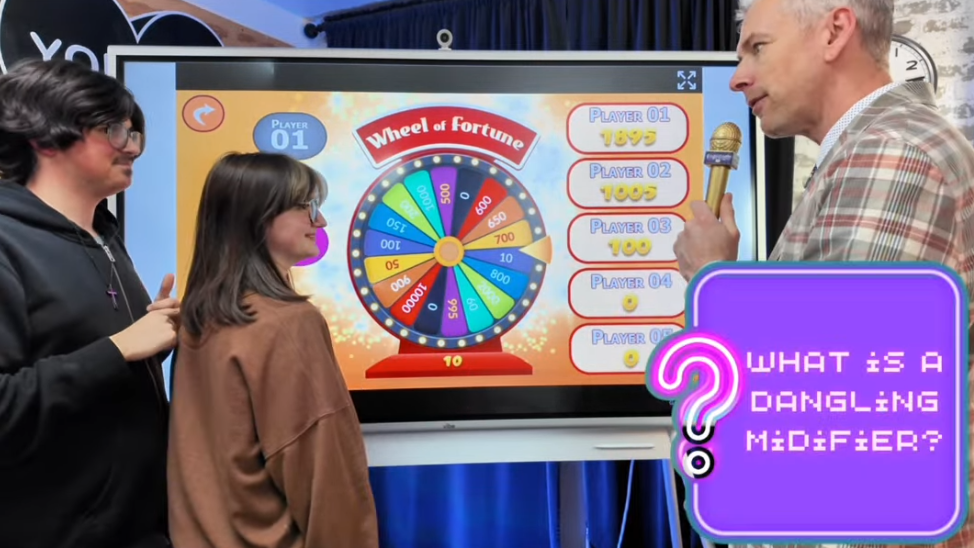
What Is Gamification in Education?
Gamification in education involves applying game-like elements to learning environments and activities. This can include points, rewards, badges, and competition to motivate students and make lessons more engaging. The goal is to create interactive experiences that help students stay focused and invested in their progress. Gamification techniques can be integrated into any subject and adapted for different learning styles, bridging the gap between entertainment and education. By doing so, educators can boost participation and make learning more enjoyable for everyone involved while also increasing retention rates and building student excitement.
6 Examples of Gamification in Education
Gamification in education is far from a one-dimensional concept. Educators who embrace it have access to an array of tools and techniques, each offering unique avenues to inspire, motivate, and challenge students. The following six examples illustrate how gamification can be woven into diverse classroom environments, from elementary schools on, and across all subject areas.
1. Points Systems
Points systems are among the most accessible and versatile gamification tools available to educators. At their core, points serve as a quantifiable measure of student participation or achievement. Teachers can award points for a wide range of activities, such as submitting homework on time, participating in class discussions, displaying positive behavior, or demonstrating mastery of specific skills. This immediate feedback mechanism helps students understand the direct impact of their actions on their progress, fostering a sense of accountability and ownership over their learning experience.
The flexibility of points systems allows them to be tailored to virtually any subject or grade level. In a mathematics classroom, for example, students might earn points for solving complex equations or for helping classmates understand difficult concepts. In language arts, points could be given for creative writing, reading comprehension, or contributing thoughtful insights during literature discussions. Science teachers might use points to reward successful completion of experiments, accurate data recording, or innovative project ideas. By aligning point values with learning objectives, educators ensure that students are motivated to engage in behaviors and activities that truly enhance their understanding.
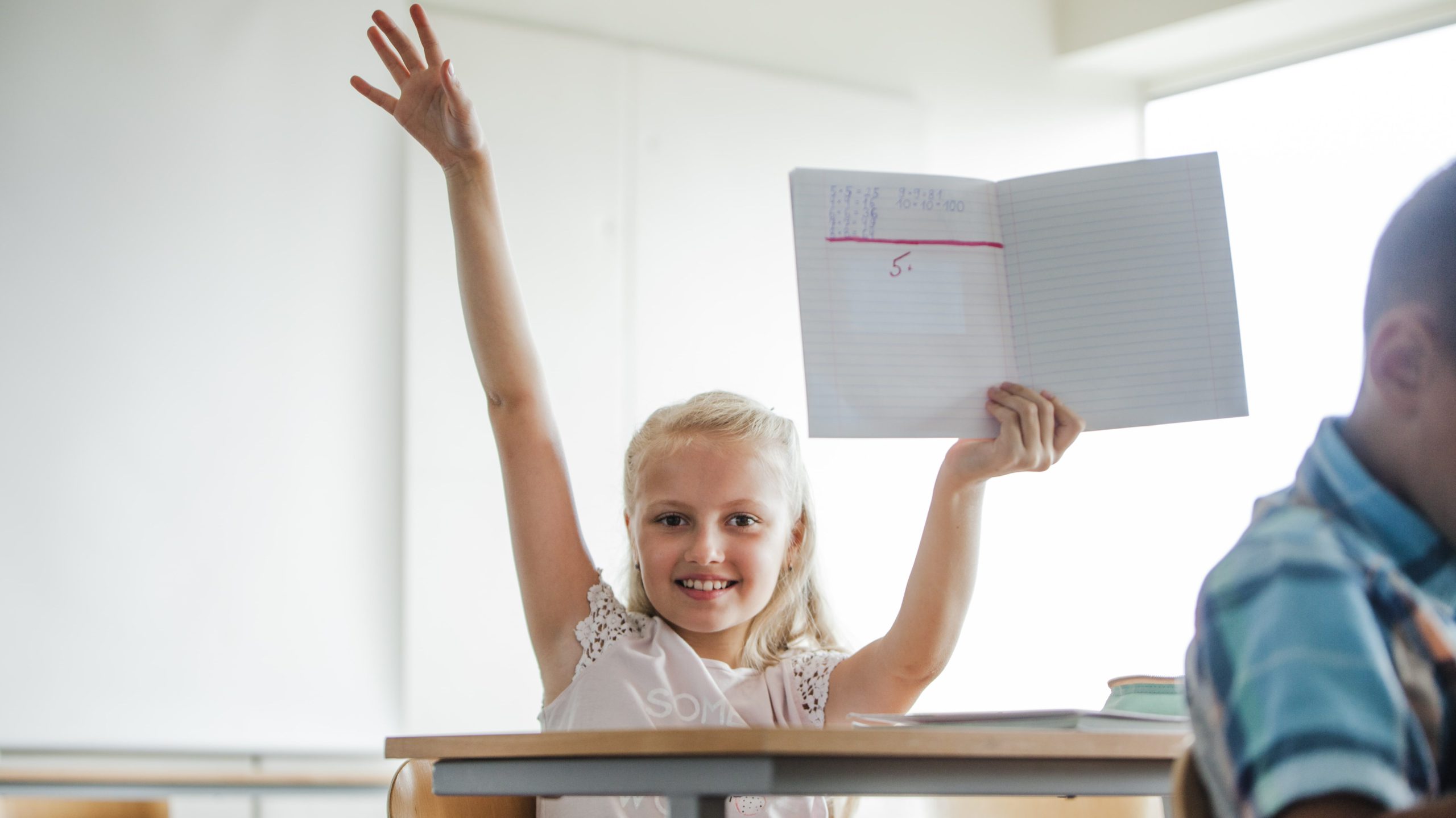
Beyond individual achievement, point systems can also foster collaboration and teamwork. Teachers may establish group point goals, encouraging students to work together toward a common objective. This approach not only builds student relationships but also helps students develop essential skills such as communication, conflict resolution, and collective problem-solving. Points can be tallied weekly, monthly, or over the course of the year, with rewards or privileges offered at key milestones. The ongoing accumulation of points creates a sense of anticipation and excitement, keeping students invested in their progress and eager to participate.
2. Badges or Achievements
Badges and achievements serve as visual tokens of accomplishment, providing tangible recognition for students’ hard work and milestones. Unlike points, which are often accumulated continuously, badges are typically awarded for reaching specific goals or demonstrating particular skills. For instance, a student might earn a "Master Reader" badge for completing a set number of books, or a "Team Player" badge for consistently supporting fellow students during group activities. These badges can be displayed digitally on learning platforms or physically on classroom walls, giving students a sense of pride in their accomplishments.
The use of badges taps into the psychology of motivation by offering clear, attainable targets. Students are often more willing to push themselves when they can see the next badge within reach, and the process of collecting badges can become a source of intrinsic motivation. Badges can be customized to reflect classroom values and priorities, such as creativity, perseverance, leadership, or empathy. Teachers can even involve students in designing badges and setting goals, further increasing their sense of investment and ownership.
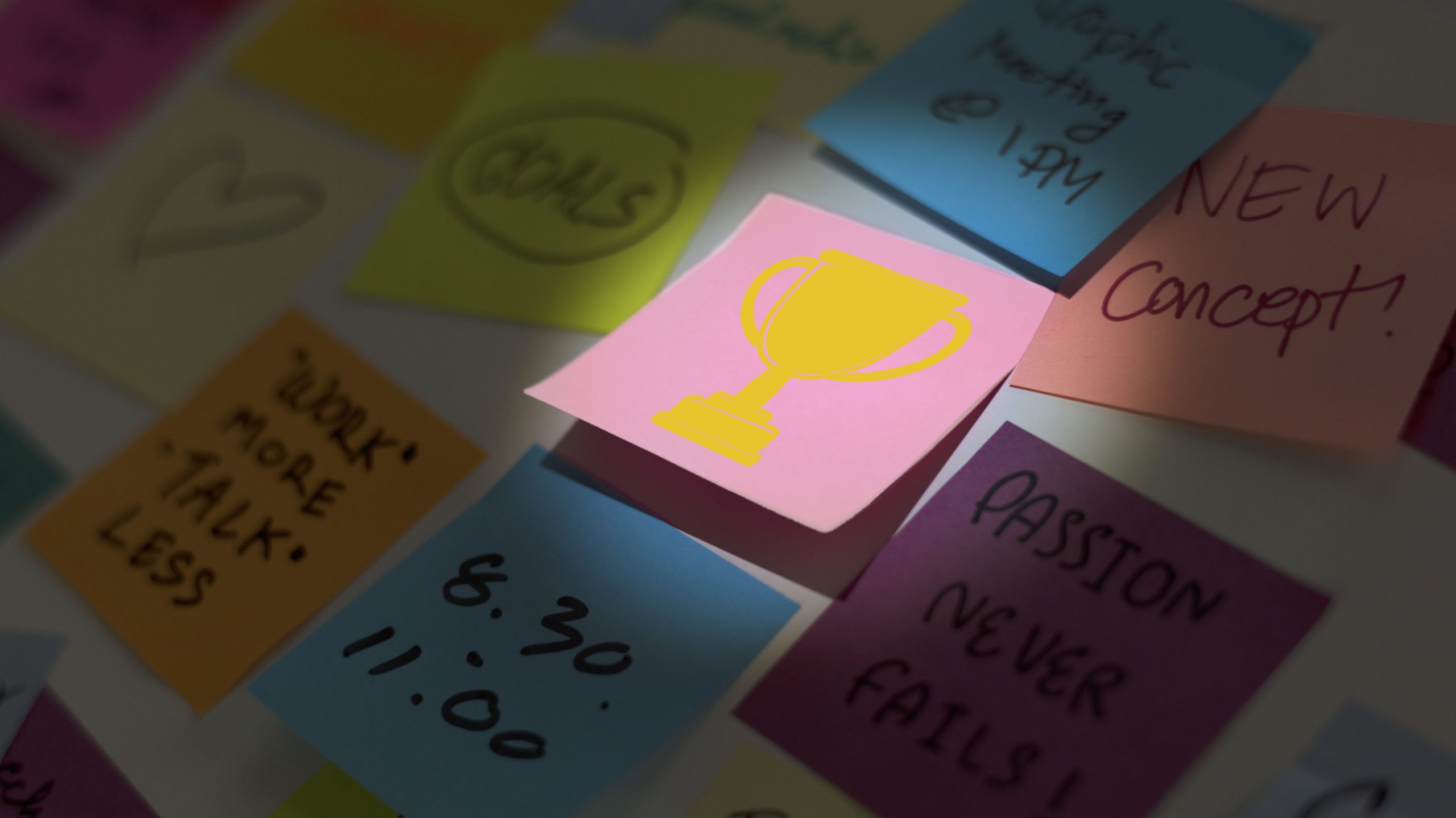
Digital learning platforms like Khan Academy, Duolingo, and Classcraft have popularized the use of badges and achievements, making them a familiar concept for today’s students. These platforms often provide detailed progress tracking and allow students to share their badges with peers or family members, reinforcing a sense of community and shared success. In the classroom, badges can be used to celebrate both academic and non-academic achievements, ensuring that every student has the opportunity to be recognized for their unique contributions. This approach helps build a positive classroom culture where effort and growth are valued alongside outcomes.
3. Leaderboards
Leaderboards introduce a competitive element to the classroom by ranking students or teams based on their performance or progress. When implemented thoughtfully, leaderboards can be a powerful motivator, inspiring students to strive for excellence and celebrate their accomplishments. They provide a real-time visual representation of where students stand relative to their peers, creating a sense of urgency and excitement that can drive student engagement.
There are many ways to structure leaderboards to maximize their positive impact. Some teachers choose to focus on individual achievement, highlighting top performers in areas such as test scores, project completion, or participation. Others prefer team-based leaderboards, which emphasize collaboration and collective progress together as a class. Leaderboards can be updated daily, weekly, or at the end of each unit, depending on the classroom’s needs and goals. To ensure inclusivity, teachers may highlight different metrics, such as most improved, best teamwork, or most creative solution, so that a variety of strengths are recognized.

It’s important to note that leaderboards should be used with care to avoid discouraging students who may struggle to keep up. Many educators address this by anonymizing entries or rotating the criteria for ranking. For example, one week the leaderboard might focus on math problem-solving speed, while the next week it could highlight reading comprehension or science project innovation. By varying the focus, teachers ensure that all students have opportunities to shine and that competition remains healthy and supportive. Leaderboards can also be integrated with digital tools, such as the Vibe Board S1, for real-time updates and interactive classroom displays, making the experience even more engaging.
4. Quests and Challenges
Quests and challenges transform traditional assignments into engaging adventures, infusing the classroom with a sense of purpose and excitement. In this approach, learning objectives are framed as missions or journeys, often accompanied by a narrative or story that guides students through a series of tasks. For example, a social studies teacher might design a "World Explorer Quest," where students complete research, solve puzzles, and present findings about different countries. In science, students could embark on a "Space Mission Challenge," conducting experiments to simulate life on Mars and documenting their discoveries.
Quests and challenges can be structured for individuals, pairs, or groups, allowing for flexibility in classroom dynamics. Teachers may introduce branching paths, where students make choices that affect the direction of the quest, or include "boss battles", culminating activities that require students to synthesize and apply their knowledge. This approach not only makes learning more interactive but also encourages students to choose the direction of their educational journey. The use of storytelling elements, such as characters, settings, and plot twists, adds depth and intrigue, making lessons more memorable and meaningful.
In addition to academic content, quests and challenges often emphasize soft skills such as collaboration, communication, and storytelling. Students must work together to solve problems, delegate tasks, and navigate setbacks. Teachers can incorporate checkpoints and rewards throughout the quest, providing regular feedback and celebrating progress. This structure helps break larger projects into manageable steps, reducing overwhelm and building confidence. Quests and challenges are especially effective for project-based learning, interdisciplinary units, and classrooms seeking to foster creativity and critical thinking.
5. Game-based Learning Platforms
Game-based learning platforms represent a comprehensive approach to gamification, integrating educational content directly into interactive digital games. These platforms, such as Kahoot!, Classcraft, Minecraft Education Edition, and Prodigy, immerse students in virtual environments where learning objectives are seamlessly woven into gameplay. Students might solve math problems to advance through a fantasy world, complete science questions to unlock new levels, or collaborate on building projects that demonstrate historical or engineering concepts.
One of the key strengths of game-based learning platforms is their ability to adapt to different learning styles and paces. Many platforms use adaptive algorithms to adjust the difficulty of tasks based on student performance, ensuring that each learner is appropriately challenged. Instant feedback is a hallmark of these systems, with students receiving points or in-game rewards for correct answers and creative solutions. This immediate response helps reinforce learning and keeps students motivated to continue exploring.
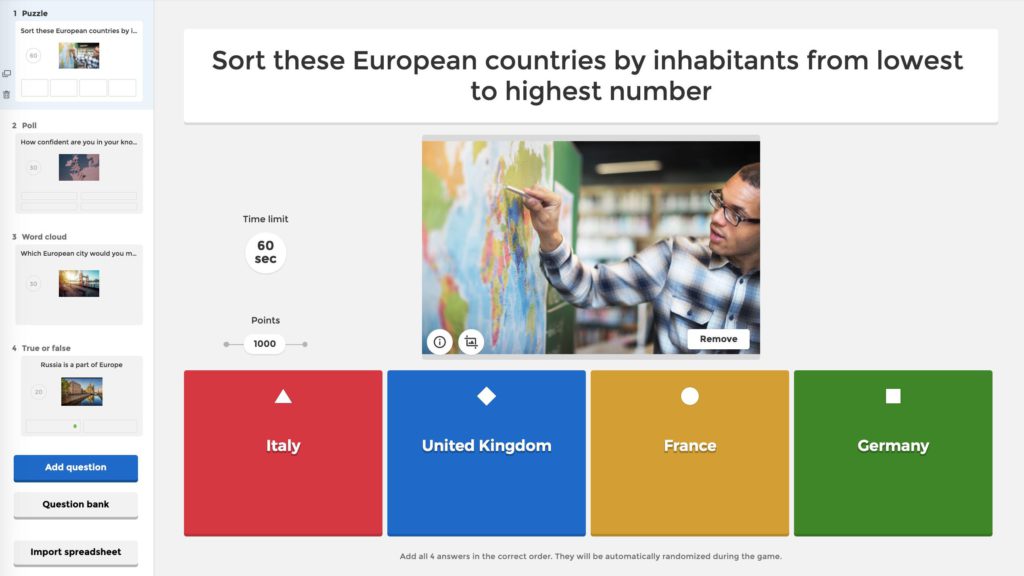 Screenshot of playing educational games on Kahoot!.
Screenshot of playing educational games on Kahoot!.Game-based platforms also promote collaboration and social interaction. Many games include multiplayer modes, where students must work together to solve problems or achieve common goals. Teachers can create custom challenges, monitor progress, and provide targeted support through integrated dashboards. The immersive nature of these platforms makes complex topics more approachable, especially for digital-native students who are accustomed to interactive media. By blending entertainment with education, game-based learning platforms help students develop not only academic knowledge but also improve digital literacy.
6. Class-wide Competitions
Class-wide competitions bring the entire classroom together for shared challenges and collective achievement. These events can take many forms, from academic tournaments and spelling bees to reading marathons and science fairs. Competitions are often structured around goals with prizes or recognition awarded to top performers, most improved students, or teams that demonstrate exceptional collaboration.
The benefits of class-wide competitions extend beyond academic performance. These activities foster a sense of community and school spirit, as students rally together to achieve common goals. Friendly rivalry encourages students to push themselves and support their peers, while the public celebration of achievements builds confidence and pride. Teachers can use competitions to reinforce key concepts, motivate reluctant learners, and inject energy into the classroom routine.
Teachers can also use competitions to promote important values such as sportsmanship, perseverance, and respect. By making learning a group adventure, class-wide competitions turn academic progress into shared triumphs and memorable experiences.
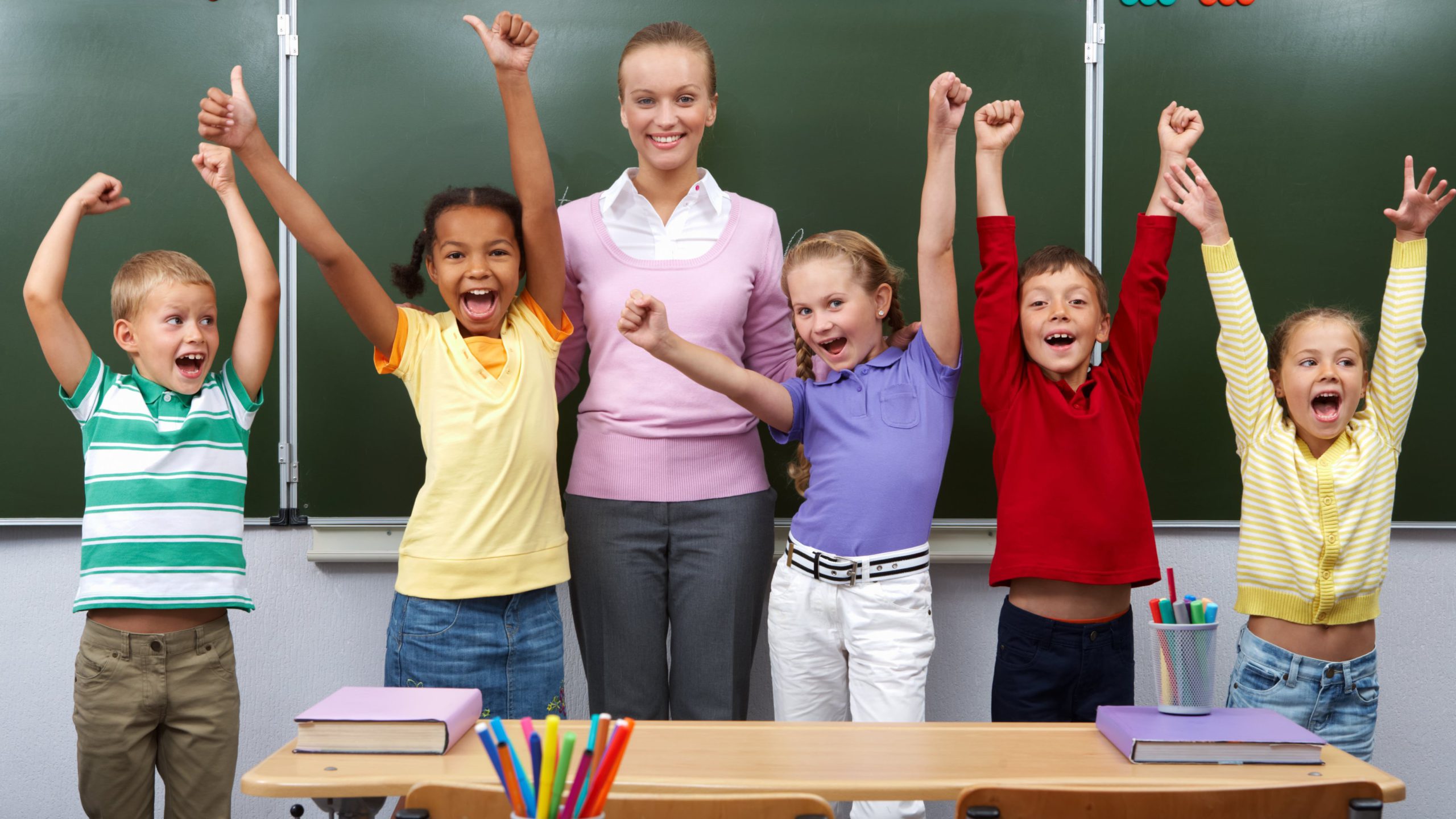
Benefits of Gamification in Educational Settings
Gamification offers a range of benefits that extend beyond making learning enjoyable. When applied thoughtfully, it supports academic achievement, the SAMR model, personal growth, and classroom community.
Increased Student Engagement and Motivation
Gamification makes lessons interactive and fun, which helps students stay engaged. Rewards, levels, and badges boost motivation, while friendly competition creates excitement. Students are more likely to participate and take initiative when learning feels rewarding.
Enhanced Knowledge Retention and Recall
Gamified activities are memorable and often involve repetition, which reinforces key concepts. Active participation helps students retain information and recall it more easily. The engaging nature of gamified tasks makes learning stick.
Development of Problem-Solving and Critical Thinking Skills
Gamification encourages students to think critically and solve problems creatively. Challenges and puzzles require adaptability and persistence, helping students develop resilience and a growth mindset. These skills are valuable both in and out of the classroom.
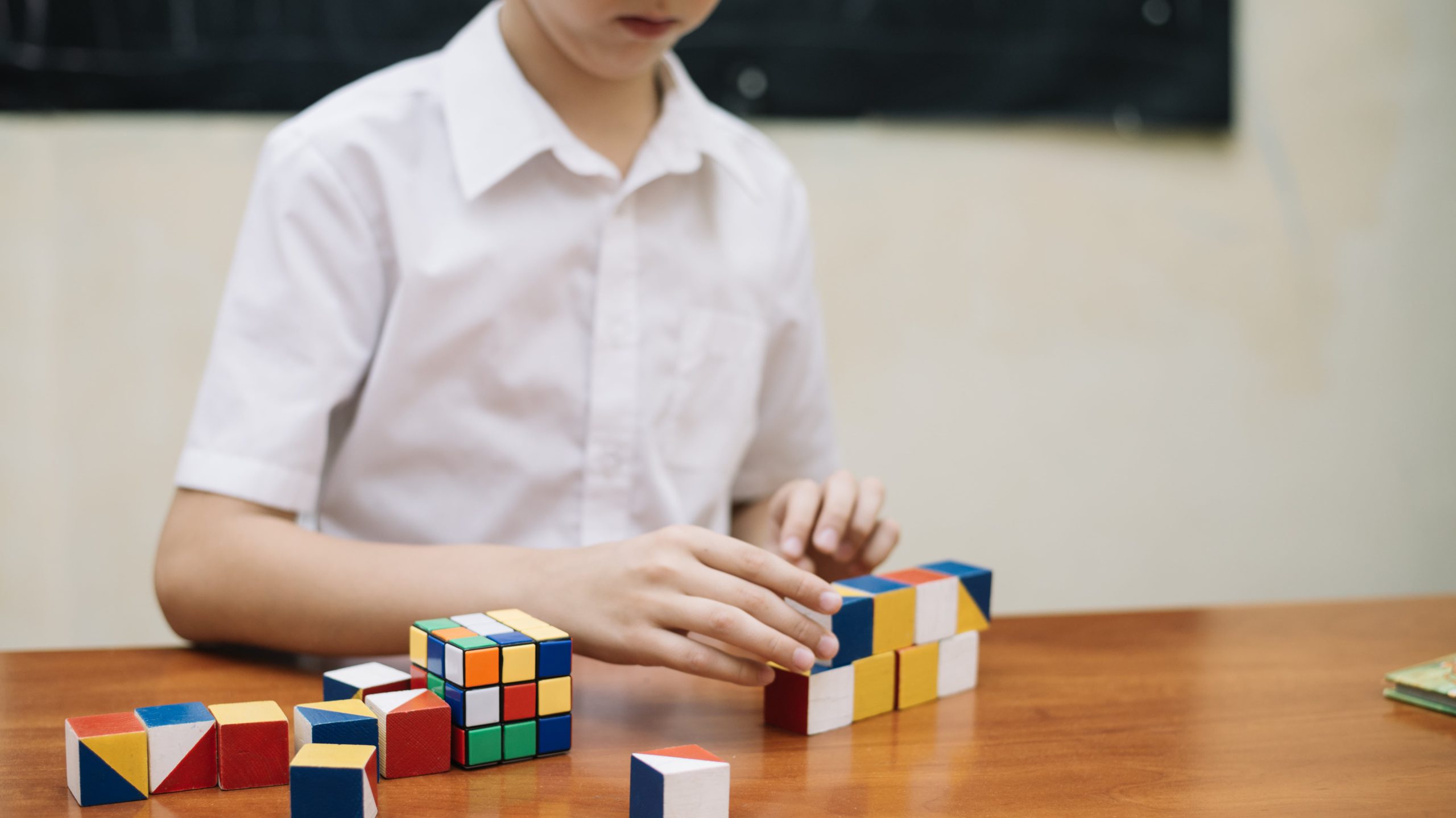
Promotion of Collaboration and Healthy Competition
Team-based challenges promote collaboration and communication. Healthy competition motivates students to push themselves, while group activities build social skills and a sense of belonging. Gamification helps students learn from and support each other.
Personalized Learning Experiences
Gamification allows students to learn at their own pace. Adaptive difficulty levels ensure that content matches individual needs, and students can revisit challenges to deepen understanding. This personalized approach supports mastery for all learners.
Immediate Feedback and Progress Tracking
Instant feedback helps students identify strengths and areas for improvement. Progress tracking keeps students motivated by showing their achievements and growth. Regular feedback encourages continuous effort and learning.
Gamify Classroom Learning with Vibe Board S1
Bringing gamification into the classroom is easier with the right technology. The Vibe Board S1, a smart whiteboard for classrooms, is designed to support interactive, gamified learning experiences for students and teachers.
The Vibe Board S1 is an all-in-one smart whiteboard that combines an interactive digital whiteboard with an open ecosystem powered by VibeOS, based on ChromeOS. It features a large, 4K UHD touchscreen (available in 55″ and 75″ sizes) and supports multi-touch input, allowing multiple students to interact simultaneously. Designed for classroom collaboration, the Vibe Board S1 integrates with over 250 popular applications and cloud services, including popular LMS (learning management systems) and education applications, including Kahoot!, Khan Academy, ClassDojo, GoNoodle, and much more. Its intuitive interface, built-in speakers, and simple-to-understand and use interface make it a versatile hub for both traditional and hybrid classrooms.
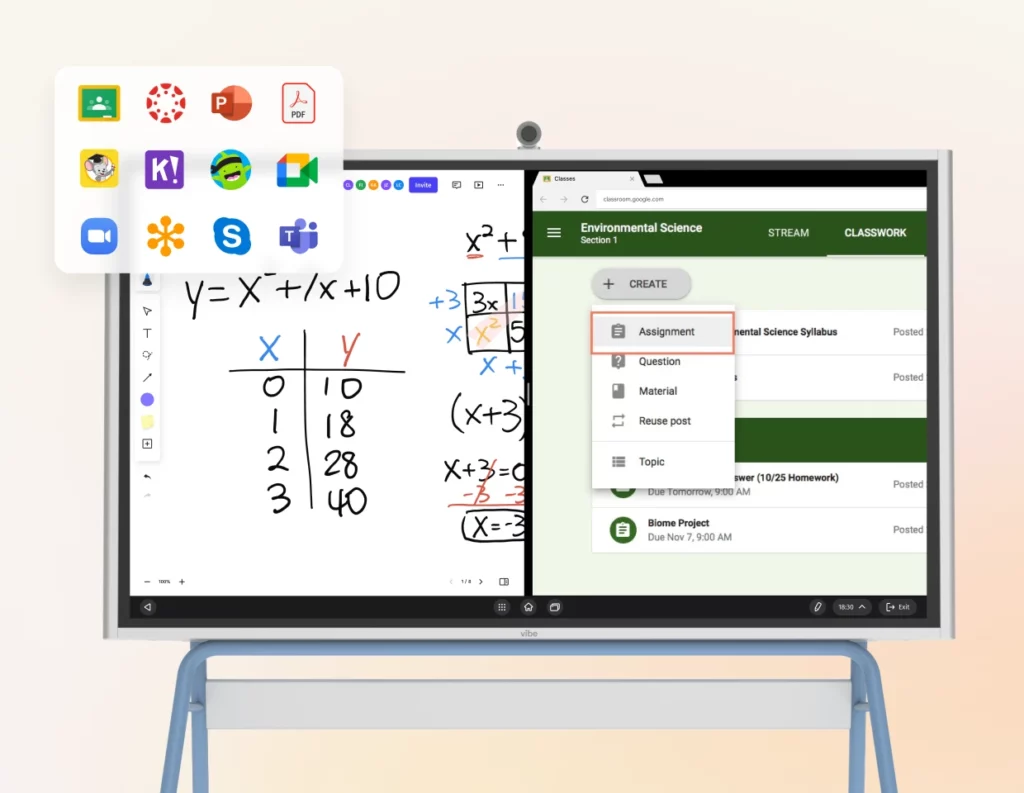 Vibe Board displaying split screen function with two educational apps running side by side.
Vibe Board displaying split screen function with two educational apps running side by side.Real-Time Classroom Leaderboard
With the Vibe Board S1’s infinite canvas and multi-touch support, teachers and students can work together simultaneously drawing, annotating, and engaging on the same smart whiteboard. Classrooms can create dynamic leaderboards that update in real time. Students see their progress instantly, which sparks friendly competition and keeps everyone engaged. Whether tracking points, badges, or completed quests, the leaderboard provides a clear visual of classroom achievements.
Personalization and Interactive Features
Vibe Board allows students to personalize their experience by adding avatars, badges, or stickers as they progress. Interactive annotations and real-time collaboration features enable direct engagement with lesson content. Students and teachers can draw, highlight, and manipulate elements on the board, making every lesson interactive and participatory.
Seamless Integration for All Students
The Vibe Board’s cloud sharing capabilities ensure that both in-person and remote students can participate in gamified content as if they were in class. Real-time updates and collaboration tools create a unified classroom community, regardless of location. This inclusivity boosts motivation and ensures that every student reaps the benefits of gamified learning activities.
Technology Makes Gamified Learning More Impactful
Gamification has the potential to transform education by making learning more engaging, memorable, and effective. Integrating points, badges, leaderboards, and interactive platforms motivates students, fosters collaboration, and personalizes the learning experience. Technology like the Vibe Board amplifies these benefits, providing real-time interaction and seamless integration for every lesson.
Check out the Vibe Board S1 to bring interactive, gamified learning to life in your classroom. With the right tools, every lesson can become an engaging adventure, and every student can experience the joy of learning.




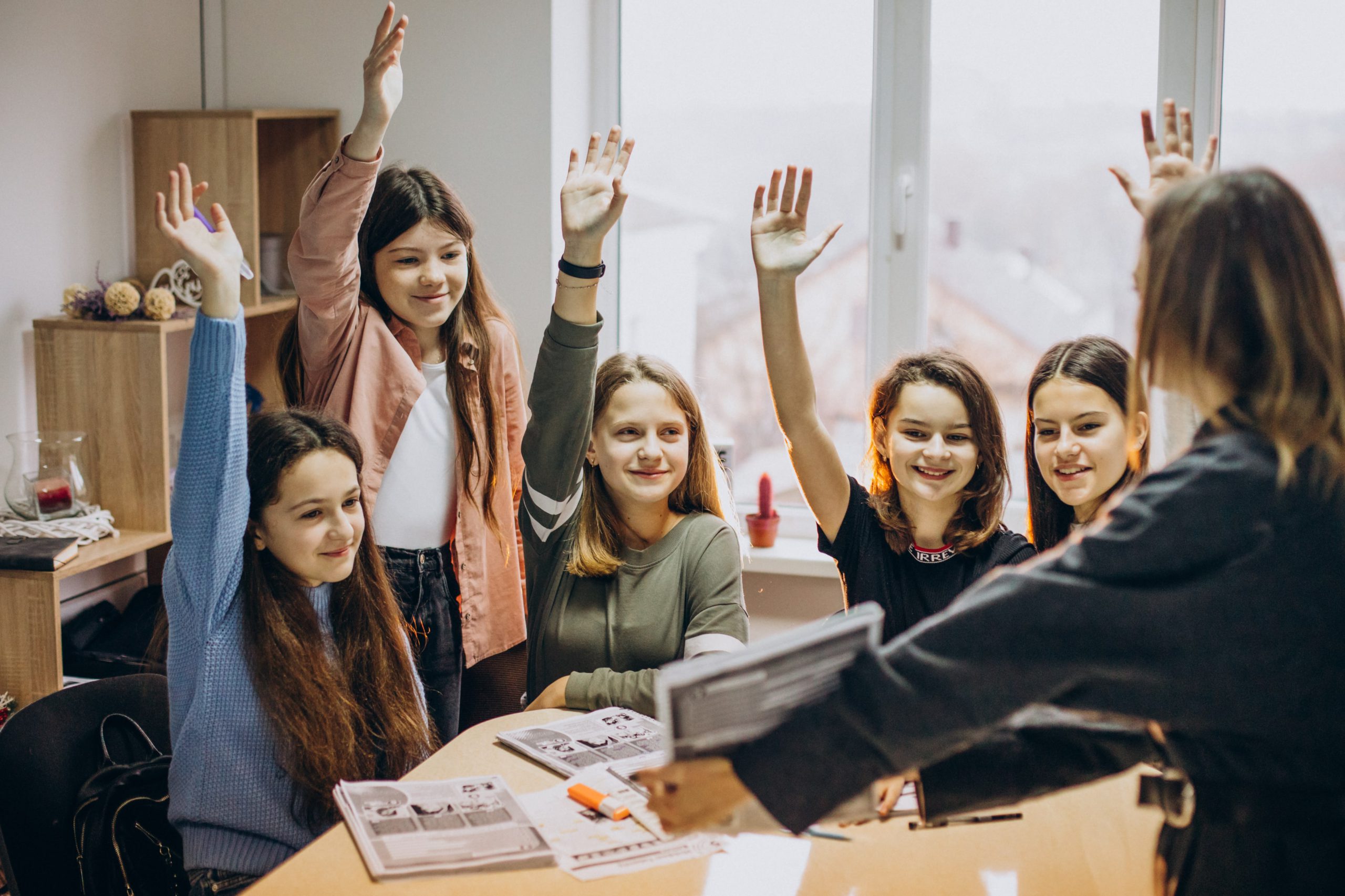

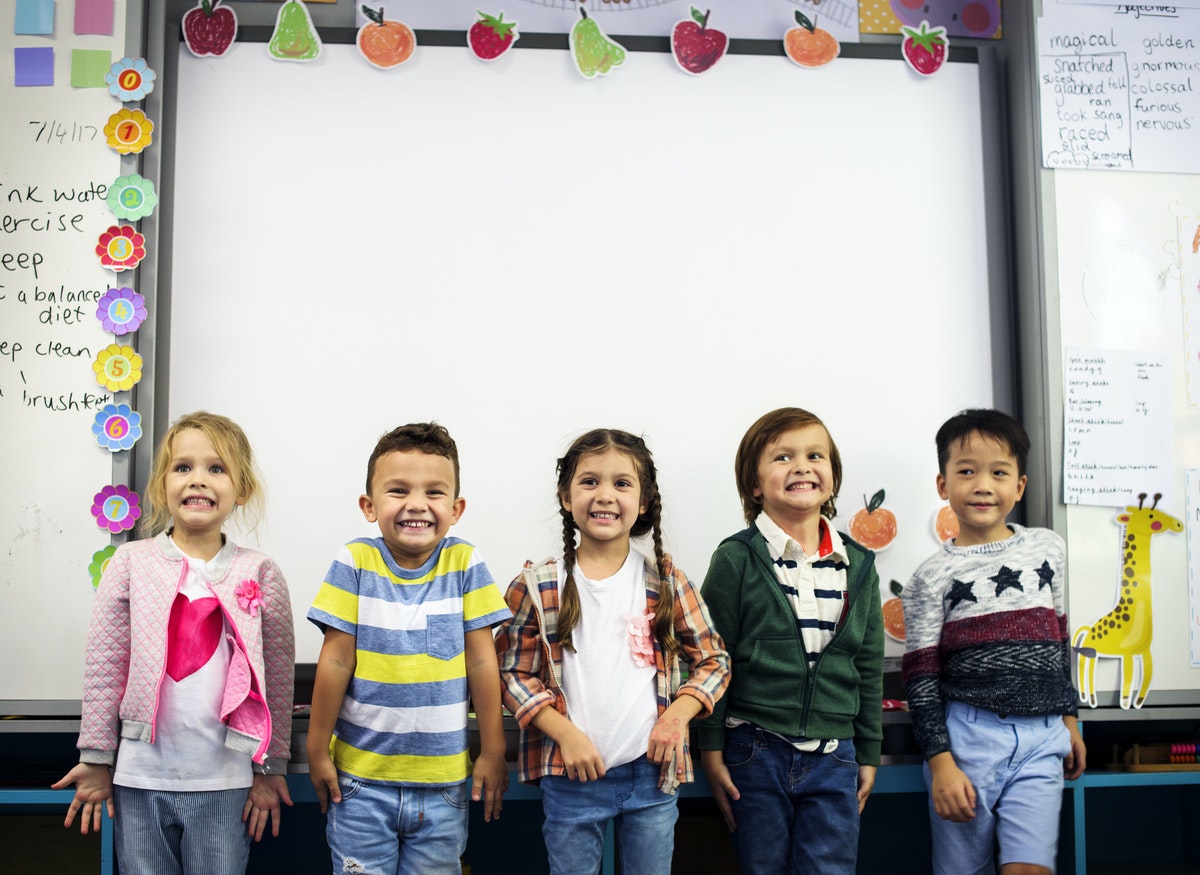

-1sbltxxq4FYxHrXrwJVLsCDNsXpqNa.webp)
-5Zp0pmSytvcuYDVs1LvuwplKuRneK0.webp)
